Description
Geogrid Fabric Parameter
Uniaxial Geogrid
The uniaxial tensile plastic geogrid possesses exceptionally high tensile strength and tensile modulus. This plastic geogrid mesh is crafted from high-density polyethylene (HDPE) as the primary material, extruded into thin sheets, punched to form a regular mesh, and subsequently longitudinally stretched. It finds widespread applications in various fields, including dams, tunnels, docks, highways, railways, and construction projects.
| Spec Items | Minimum Average Tensile Strength n (KN/m) | Typical strainM.A..T.S. w (%) | Tensile Strength at2% Strain n (KN/m) | Tensile Strength at5% Strain n (KN/m) | Roll Length(m) | Roll Width(m) |
| TGDG80-80 | 80 | 10% | 26 | 48 | 50-100 | 1-4 |
| TGDG100-100 | 100 | 10% | 31 | 60 | 50-100 | 1-4 |
| TGDG110-110 | 110 | 10% | 32 | 66 | 50-100 | 1-4 |
| TGDG120-120 | 120 | 10% | 36 | 72 | 50-100 | 1-4 |
| TGDG130-130 | 130 | 10% | 38.5 | 76.5 | 50-100 | 1-4 |
| TGDG150-150 | 150 | 10% | 45 | 90 | 50-100 | 1-4 |
| TGDG160-160 | 160 | 10% | 50 | 100 | 50-100 | 1-4 |
| TGDG180-180 | 180 | 10% | 55 | 110 | 50-100 | 1-4 |
| TGDG200-200 | 200 | 10% | 70 | 120 | 50-100 | 1-4 |
| TGDG220-220 | 220 | 10% | 80 | 140 | 50-100 | 1-4 |
| TGDG260-260 | 260 | 10% | 90 | 180 | 50-100 | 1-4 |
| TGDG280-280 | 280 | 10% | 95 | 195 | 50-100 | 1-4 |
| TGDG300-300 | 300 | 10% | 100 | 210 | 50-100 | 1-4 |
| TGDG320-320 | 320 | 10% | 110 | 210 | 50-100 | 1-4 |
Biaxial Geogrid
Biaxial geogrid possesses remarkable tensile strength in both longitudinal and transverse directions. This biaxial integral geogrid product is manufactured from polypropylene (PP) or polyethylene (PE) as the raw material, undergoing a process involving plasticization, extrusion, punching, and subsequent longitudinal and transverse stretching. Primarily designed for the reinforcement of dams, roadbeds, slope protection, cave walls, and permanent foundations, it serves as a crucial component in large-scale projects such as airports, parking lots, docks, and freight yards.
| Item | TGSG15-15 | TGSG20-20 | TGSG25-25 | TGSG30-30 | TGSG35-35 | TGSG40-40 | TGSG45-45 | TGSG50-50 |
| Longitudinal tensile strength ≥(kN/m) | 15 | 20 | 25 | 30 | 35 | 40 | 45 | 50 |
| Transverse tensile strength ≥(kN/m) | 15 | 20 | 25 | 30 | 35 | 40 | 45 | 50 |
| Longitudinal nominal elongation ≤(%) | 15 | |||||||
| Transverse nominal elongation ≤(%) | 13 | |||||||
| Longitudinal tensile strength at 2% elongation ≥(kN/m) | 5 | 7 | 9 | 10.5 | 12 | 14 | 16 | 17.5 |
| Tensile strength ≥(kN/m) at transverse elongation of 2% | 5 | 7 | 9 | 10.5 | 12 | 14 | 16 | 17.5 |
| Longitudinal tensile strength at 5% elongation ≥(kN/m) | 7 | 14 | 17 | 21 | 24 | 28 | 32 | 35 |
| Tensile strength ≥(kN/m) at 5% transverse elongation | 7 | 14 | 17 | 21 | 24 | 28 | 32 | 35 |
Fiberglass Geogrid
Warp-knitted fiberglass geogrid boasts high tensile strength both longitudinally and transversely, coupled with low elongation and a high tensile modulus. Utilizing high-strength alkali-free glass fiber, it is fabricated into a mesh base material using advanced warp knitting technology. The product is then surface-coated to achieve a semi-rigid form. This glass fiber geogrid finds extensive applications in the reinforcement of asphalt pavement, cement pavement, roadbeds, railway subgrades, dam slope protection, airport runways, desertification prevention and control, and various other engineering projects.
| Specification | EGA 30-30 | EGA 50-50 | EGA 80-80 | EGA 100-100 | EGA 120-120 | EGA 150-150 | EGA 200-200 | EGA 300-300 | |
| Mesh size(mm) | 25.4×25.4 or 12.5×12.5 or 50.8×50.8 | ||||||||
| Breaking strength(kN/m) | Warp direction | 30 | 50 | 80 | 100 | 120 | 150 | 200 | 300 |
| Across warp | 30 | 50 | 80 | 100 | 120 | 150 | 200 | 300 | |
| Elongation at break(%) | Warp direction | 3 | 3 | 3 | 3 | 3 | 3 | 3 | 3 |
| Across warp | 3 | 3 | 3 | 3 | 3 | 3 | 3 | 3 | |
| Thermal tolerance(℃) | -100 -280 | ||||||||
| Widths(m) | From 1-6 | ||||||||
Warp-knitted Polyester(PET) Geogrid
Warp-knitted PET geogrid offers high tensile strength, exceptional tear resistance, and robust bonding with earth and stone materials. Constructed using high-strength polyester industrial filament, it is woven into a directional grid fabric through warp knitting techniques and coated with PVC to create geogrid mesh. Primarily employed in the treatment of soft soil foundations and the reinforcement of roadbeds, dams, and other projects, it serves to enhance project quality and reduce overall costs.
| Specification | PET 15-15 | PET 20-20 | PET 25-25 | PET 30-30 | PET 40-40 | PET 50-50 | PET 60-60 | PET 80-80 | |
| Tensile strength (kN/m) | Vertical | 15 | 20 | 25 | 30 | 40 | 50 | 60 | 80 |
| Horizontal | 15 | 20 | 25 | 30 | 40 | 50 | 60 | 80 | |
| Specification | PET100-100 | PET120-120 | PET200-200 | PET300-300 | PET400-400 | PET600-600 | PET800-800 | PET1200-1200 | |
| Tensile strength(kN/m) | Vertical | 100 | 120 | 200 | 300 | 400 | 600 | 800 | 1200 |
| Horizontal | 100 | 120 | 200 | 300 | 400 | 600 | 800 | 1200 | |
| Elongation(%) | ≤13 | ||||||||
| Width(m) | 1-6 | ||||||||
| Mesh size(mm) | 12.7*12.7mm, 25.4*25.4mm, 50.8*50.8mm, 76.2*76.2mm | ||||||||
Steel-plastic Geogrid
Steel-plastic geogrid exhibits the capability to achieve an exceptionally high tensile modulus with low strain capacity, minimal creep, and the distinct advantage of breaking elongation being less than 3%. Constructed from specially treated high-strength steel wire, combined with polyethylene (PE) or polypropylene (PP), and other additives, it undergoes extrusion to form a composite high-strength tensile strip with a rough embossed surface. The strips are then vertically and horizontally braided or sandwiched at specific intervals, and the intersection points are welded using specialized fusion welding technology (ultrasonic welding technology) for enhanced bonding. This geogrid membrane is primarily employed in soft soil foundation reinforcement, as well as in applications such as retaining walls, pavement anti-crack engineering for highways, railways, bridge abutments, approach roads, docks, dams, and slag dumps.
| Performance/Specification | GSZ30-30 | GSZ45-45 | GSZ60-60 | GSZ80-80 | GSZ100-100 | GSZ120-120 |
| Two-way Limited Rally (KN/m)>= | 30 | 45 | 60 | 80 | 100 | 120 |
| Two-way Limited elongation ratio(%)<= | 3 | 3 | 3 | 3 | 3 | 3 |
| Elongation at a% of the rally (KN/m)>= | 23 | 36 | 48 | 63 | 81 | 98 |
| Width(m) | 1-6 | |||||
Multi-axis Geogrid
Multi-axis geogrid stands out for its enhanced stability and efficiency, offering a more reasonable stress state. It not only guarantees foundation stability but also possesses ample tensile and shear strength, among other advantages. This plastic geogrid layer features a flat mesh structure formed through plastic extrusion, punching, and four-way stretching. Primarily designed for foundation reinforcement in airports, highways, railways, ports, and other infrastructure projects.
| Specification | TGDXG 10X4 PP | TGDXG 15X4 PP | TGDXG 20X4 PP |
| Secant stiffness at 2%strain ≥(kN/m machine/cross/45°/135° direction | 200 | 300 | 400 |
| Secant stiffness at 2%strain ≥ (kN/m)machine/cross/45°/135° direction | 120 | 160 | 320 |
| Tensile strength at 2%strain ≥(kN/m)machine/cross/45°/135° direction | 4 | 6 | 8 |
| Tensile strength at 5%strain ≥(kN/m)machine/cross/45°/135 °direction | 6 | 8 | 16 |
| Tensile strength ≥(kN/m)machine/cross/45°/135 °direction | 10 | 15 | 20 |
| Elongation ≤ % machine/cross/45°/135° direction | 13 | 13 | 13 |
| Carbon black content(%) | 2 | 2 | 2 |
PP Biaxial Geogrid
PP biaxial mining geogrid boasts high strength, corrosion resistance, lightweight, antistatic properties, and flame retardancy. This geosynthetic material is crafted from modified polypropylene and other high molecular polymers as raw materials, undergoing extrusion and stretching processes. Primarily designed for false roof support and tunnel support in underground working faces of coal mines and metal mines, it can also find applications in engineering support for projects like subways and tunnels.
| Item | TGSG15-15 | TGSG20-20 | TGSG25-25 | TGSG30-30 | TGSG35-35 | TGSG40-40 | TGSG45-45 |
| Longitudinal Tensile strength ≥ (KN/m) | 15 | 20 | 25 | 30 | 35 | 40 | 45 |
| Transverse Tensile strength ≥ (KN/m) | 15 | 20 | 25 | 30 | 35 | 40 | 45 |
| Longitudunal Elongation ≤ (%) | 15 | ||||||
| Transverse Elongation ≤ (%) | 13 | ||||||
| Longitudinal Tensile strength at 2% strain ≥ (KN/m) | 5 | 7 | 9 | 10.5 | 30 | 30 | 30 |
| Transverse Tensile strength at 2% strain ≥ (KN/m) | 5 | 7 | 9 | 10.5 | 30 | 30 | 30 |
| Longitudinal Tensile strength at 5% strain ≥ (KN/m) | 7 | 14 | 17 | 21 | 24 | 28 | 32 |
| Transverse Tensile strength at 5% strain ≥ (KN/m) | 7 | 14 | 17 | 21 | 24 | 28 | 32 |
| Width ≤ (m) | 6 | ||||||
As an experienced geogrid manufacturer, QIVOC provides professional geo grid fabric customization services. Our customized geogrid price is cheap and good quality. A huge advantage over other companies selling geogrids company. We will provide geogrid cost per square meter/foot/yard with a cost-effective solution.
If you need customized products, please refer to the parameters below.
Customized width: 1m-6m or customized width
Tensile strength: 15-50kN/m
Color customization: black, white, or as per customer requirements
Minimum order quantity: 1 square meter
Payment method: LC, T/T, Western Union
Supply capacity: 9000 square meters/day
Delivery time: 7-15 days
Conventional packaging: Geogrids are packed in woven bags or according to your requirements.
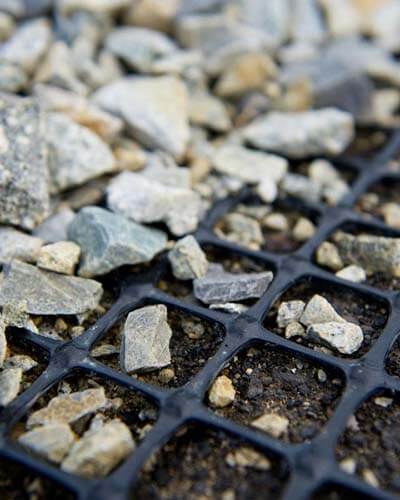
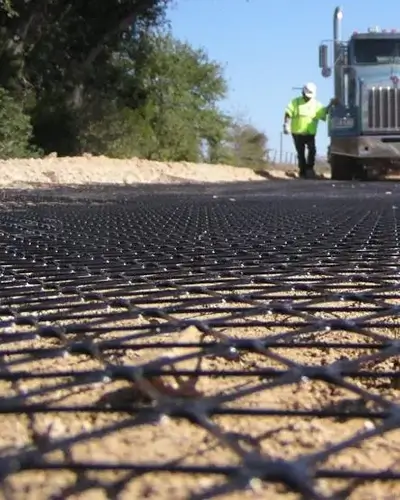
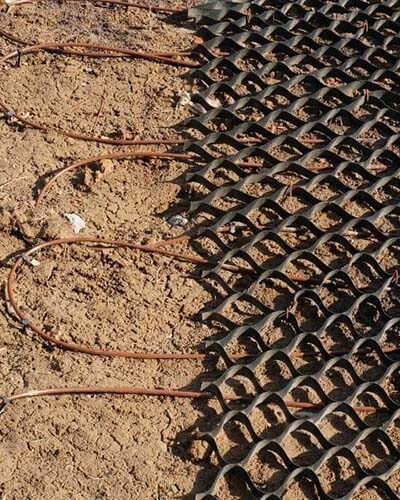
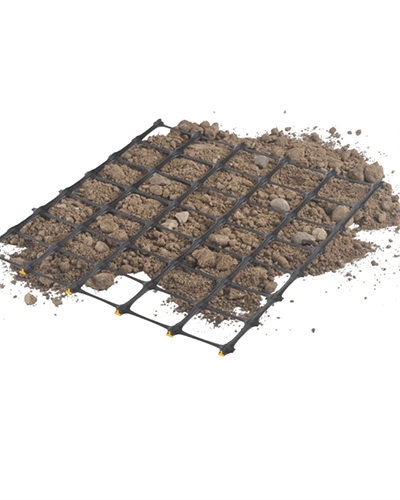
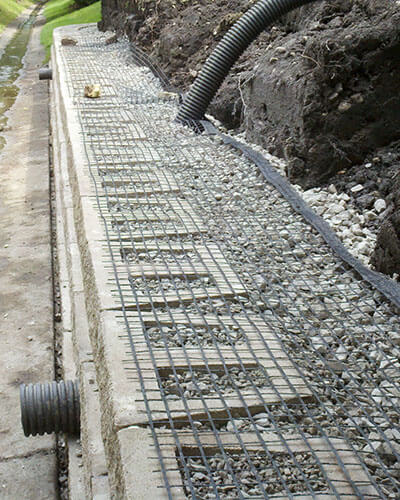
Geo Grid Mesh Advantages
As a geogrid manufacturer with 20 years of experience, we take pride in the following advantages of our products:
- High Strength: geogrid mat exhibits exceptional tensile strength, enabling it to withstand substantial loads.
- Corrosion Resistance: The polymer material inherently possesses excellent corrosion resistance, adapting well to harsh environments.
- Anti-Aging: Subject to special treatment, geosynthetic grid demonstrates commendable anti-aging properties, maintaining robust mechanical characteristics over an extended period.
- Convenient Construction: Geogrid fabric is easily processed, transported, and installed, making it adaptable to diverse and complex construction environments.
- Enhancement Effect: Geo grid mesh effectively enhances the bearing capacity of soil, sand, gravel, and other materials, minimizing deformation and settlement.
- Anti-Skid Effect: The mesh structure of geogrid mesh enhances ground friction, improving the anti-skid performance of surfaces.
- Drainage Effect: The mesh structure of geogrid membrane significantly improves drainage efficiency, preventing water retention in the soil.
- Protective Effect: Geogrid layer are an effective barrier against soil erosion, protecting from weathering and erosion.
Geogrid Mesh Applications
As a material widely employed in various project engineering applications, geo grid fabric finds primary usage in the following engineering fields:
- Road Engineering: Geogrid mat are utilized to reinforce roadbeds and pavement structures, enhancing the load-bearing capacity and stability of roads.
- Railway Engineering: In railway engineering, geogrid products contribute to the reinforcement of roadbeds, embankments, and slopes, thereby improving the safety and stability of railways.
- Water Conservancy Projects: 3d geogrid play a vital role in water conservancy projects by reinforcing river banks, reservoirs, and dams. They contribute to improving flood control capacity and overall stability in water conservancy projects.
- Construction Engineering: In construction engineering applications, geo grid material are employed to reinforce foundations, basements, and ramps, leading to improved load-bearing capacity and stability for buildings.
- Environmental Governance: Geosynthetic grid are instrumental in environmental governance efforts. They are used to prevent soil erosion, promote vegetation growth, and protect the ecological environment, contributing to sustainable environmental practices.
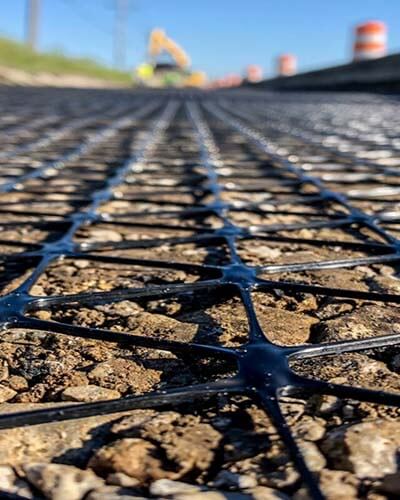
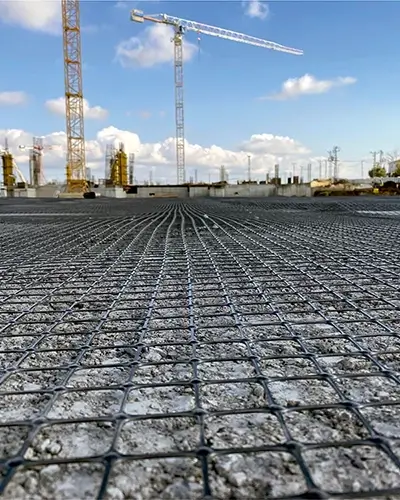
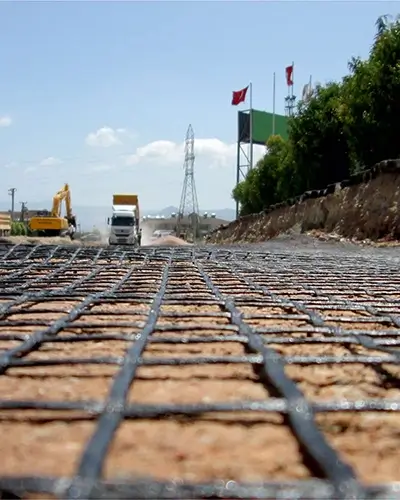
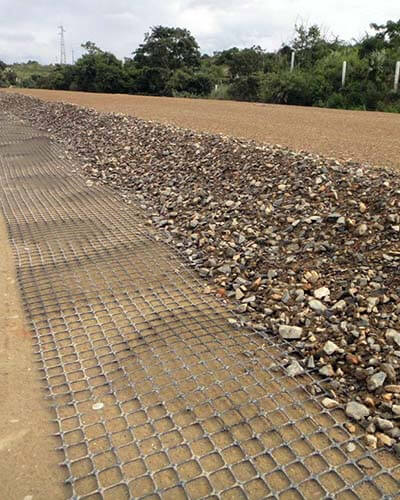
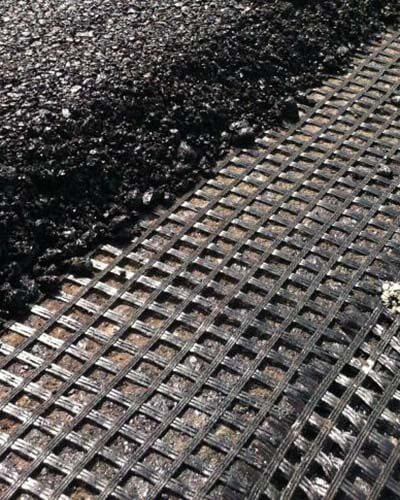
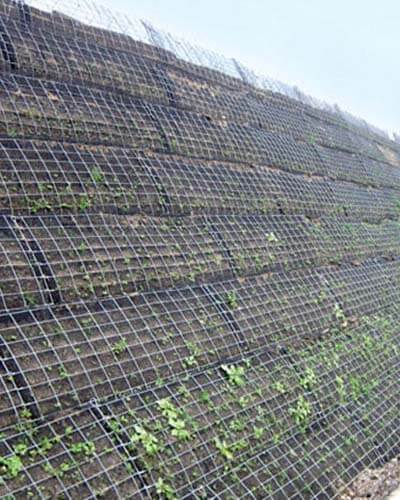
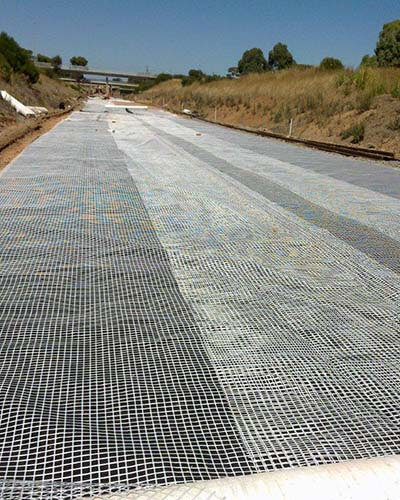
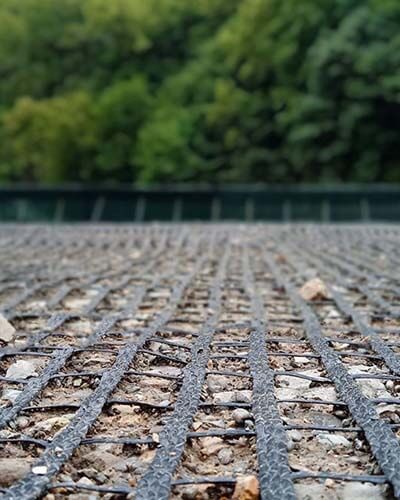
“Have a question? Click the button below to reach out to us directly for personalized support. ”
Rest assured, we’ll respond to your inquiry within 2 hours.
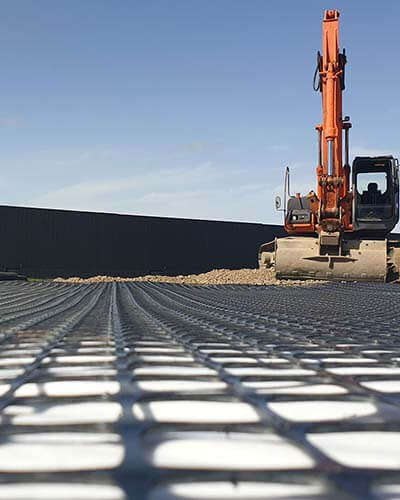
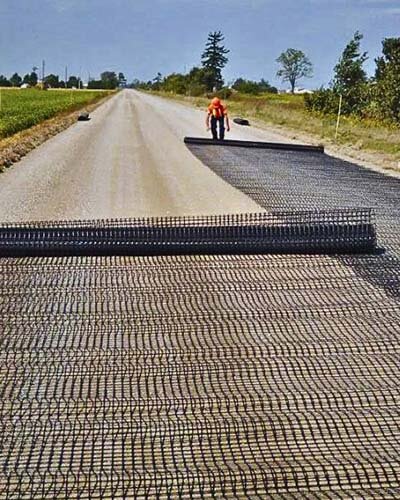
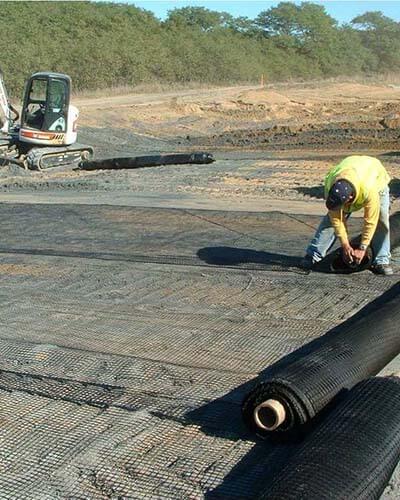
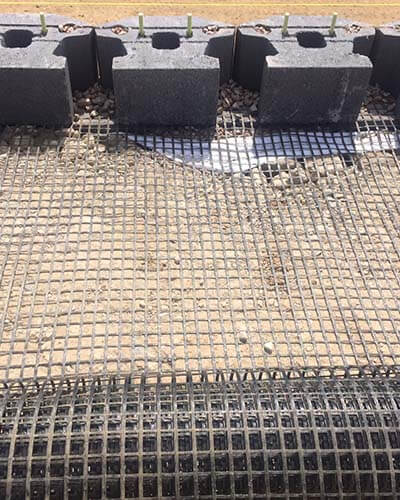
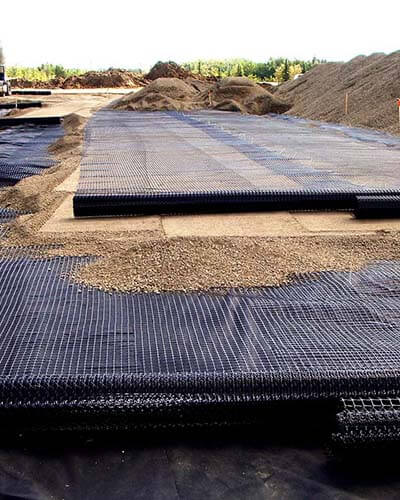
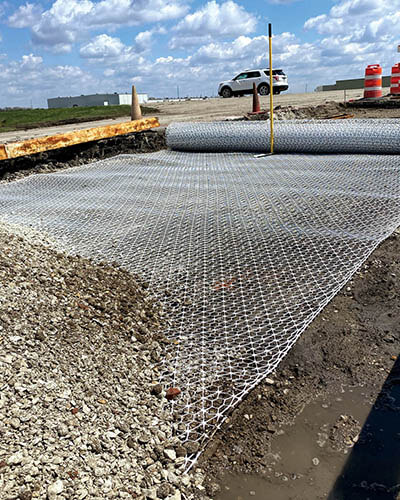
Installing Geogrid Procedures
Using and installing the geogrid is straightforward and convenient. Below is a standard construction process.
- Begin by leveling and rolling the lower layer. The flatness should not exceed 15mm, and the compaction should meet design requirements. Strictly prohibit hard protrusions like gravel and stones on the surface.
- Laying geogrid:
① Store and lay geogrids away from sunlight and prolonged exposure to prevent performance degradation.
② Lay the geogrid fabric perpendicular to the line direction, ensuring the overlap meets design specifications. Secure knots firmly, with the connection strength in the stress direction not less than the material’s design tensile strength. Ensure an overlap length of at least 20cm.
④ Maintain continuity during construction, avoiding distortion, wrinkles, or overlaps. Tighten the grid to bear force, ensuring it is even, flat, and closely adheres to the lower bearing surface. Fix it by inserting nails and other measures.
⑤ Align the long holes with the line’s cross-sectional direction, straightening and leveling the geo grid mesh. Process the grid ends as per design.
⑥ Fill the geogrid mesh promptly after laying, with an interval not exceeding 48 hours to prevent direct sunlight exposure. - Fill symmetrically according to the “first on both sides, then in the middle” principle. Strictly avoid filling directly on the geogrid membrane; discharge on the paved soil surface with a height not exceeding 1m. Prohibit vehicles from driving directly on the geogrid layer, allowing them only along the embankment.
- After the first layer of fill soil reaches the designated thickness and is rolled to the designed density, roll up the grid, wrap it 2m back, and secure it to the previous layer of geo grid fabric. Trim and anchor manually, building 1m of soil outside the rolled end to protect the grid and prevent damage.
- After completing the first layer of geogrid paving, repeat the process for subsequent layers, following the same method and steps.
Precautions for Installation of Geogrid Layer
While the construction of geogrid mat is relatively simple, attention to the following considerations is crucial during installation. Here are specific precautions for geogrid installation:
- When laying the geogrid products, align the maximum strength direction of the geogrid with the maximum stress direction.
- When laying the geosynthetic grid, make an effort to prevent heavy vehicles from driving directly on the paved surface.
- Minimize the need for cutting and sewing of geogrids to reduce waste.
- During construction in cold weather, be aware that the geogrid fabric may become rigid, posing a risk of cuts or abrasions to hands and knees. Prioritize safety precautions during such conditions.
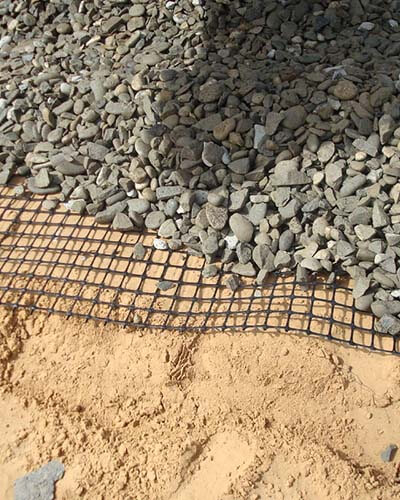
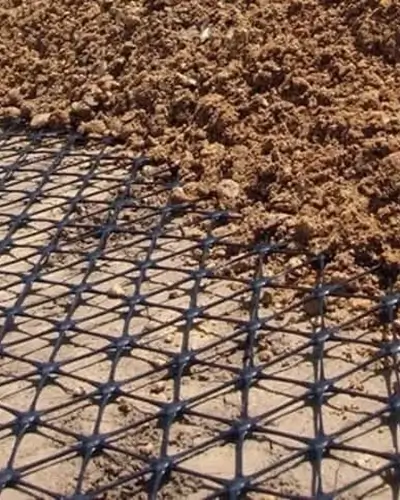
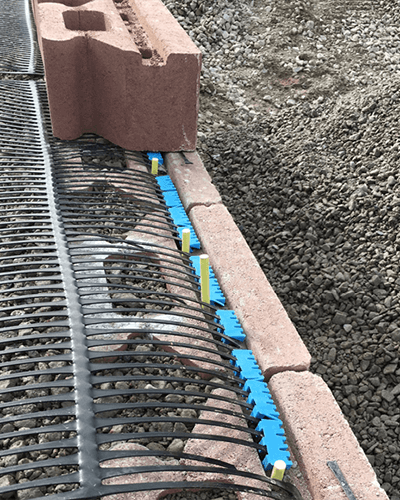
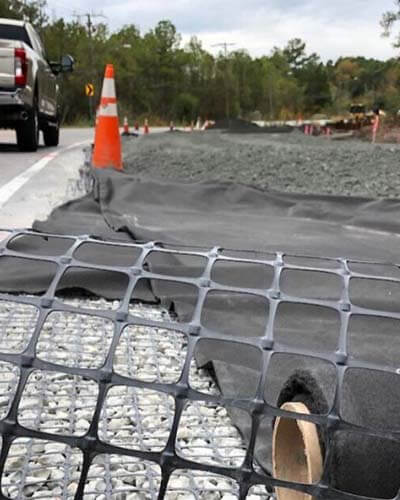
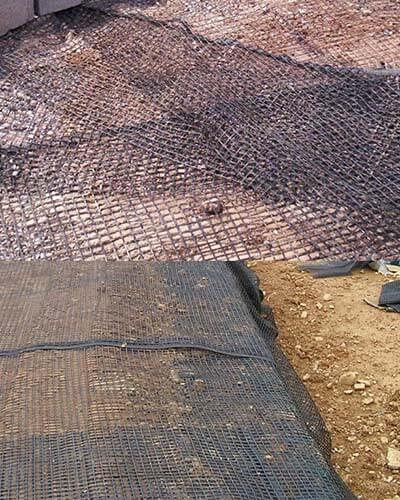
Recent Projects
Discover our recent client projects and explore the range of tailored, personalized support we provide. Share your requirements and receive the ideal solution.

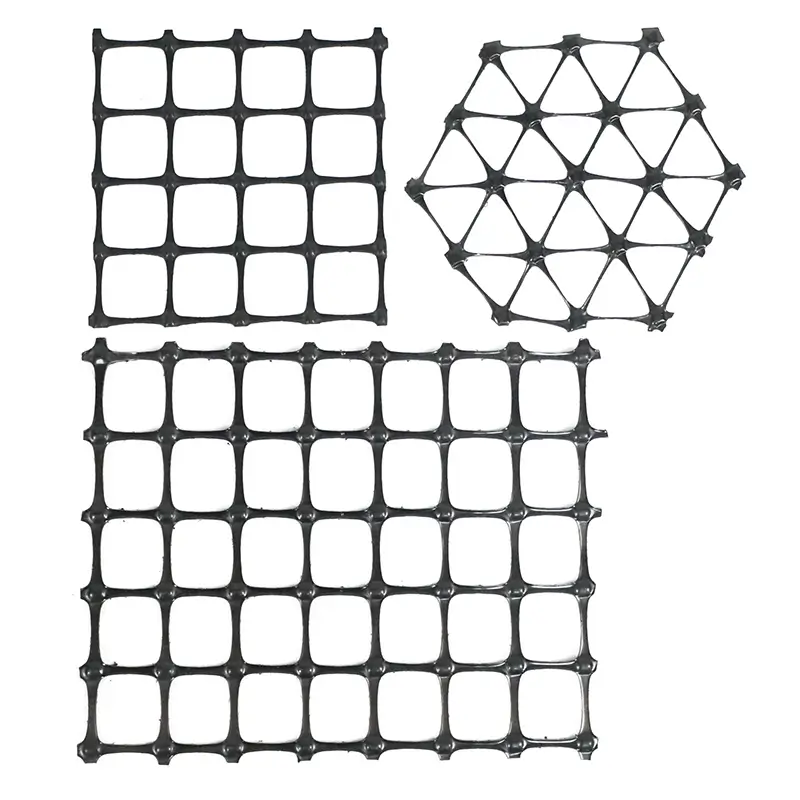
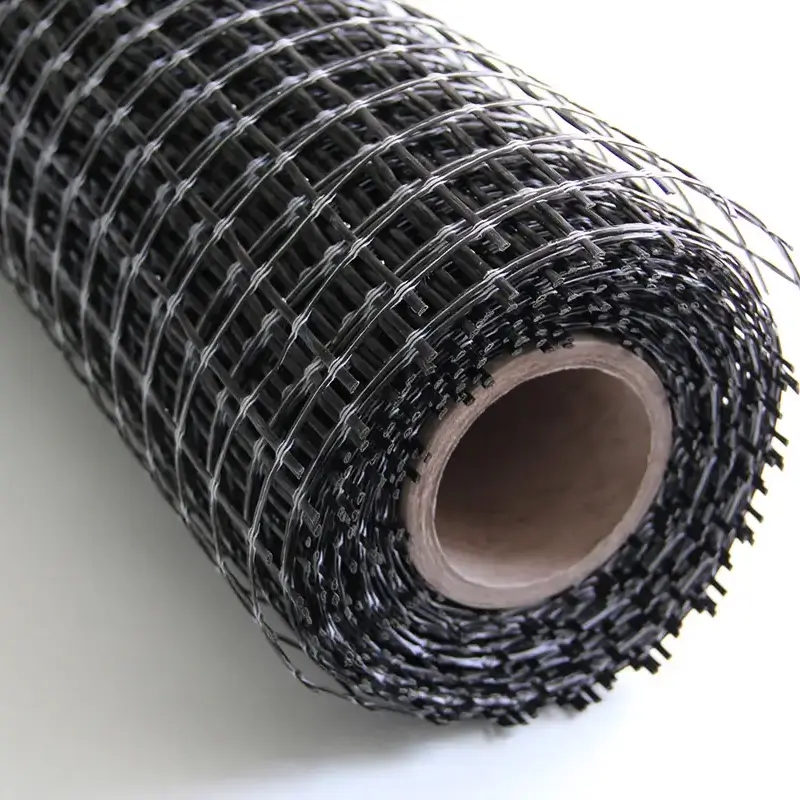
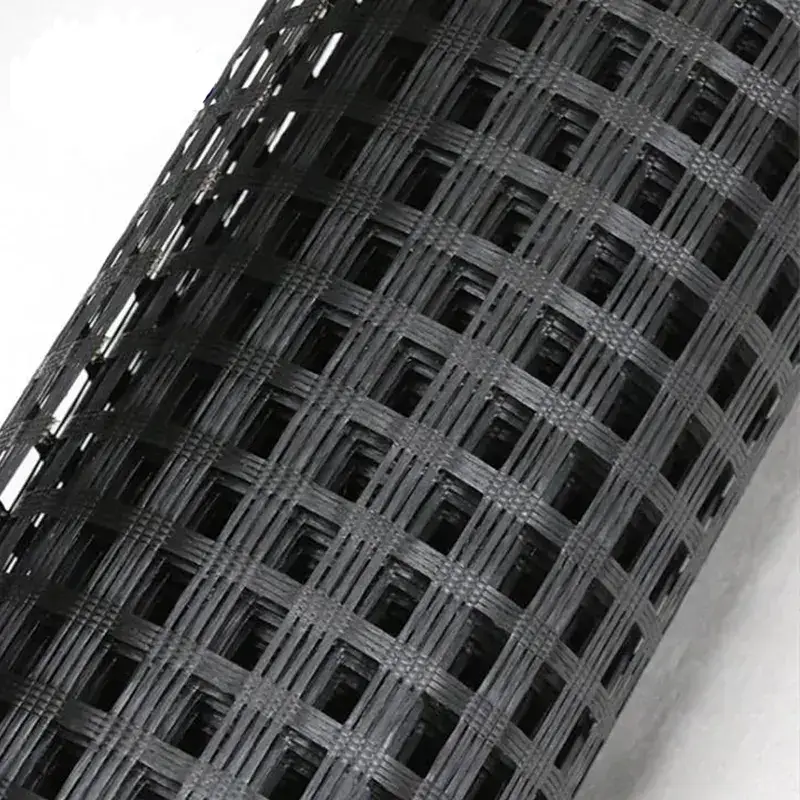
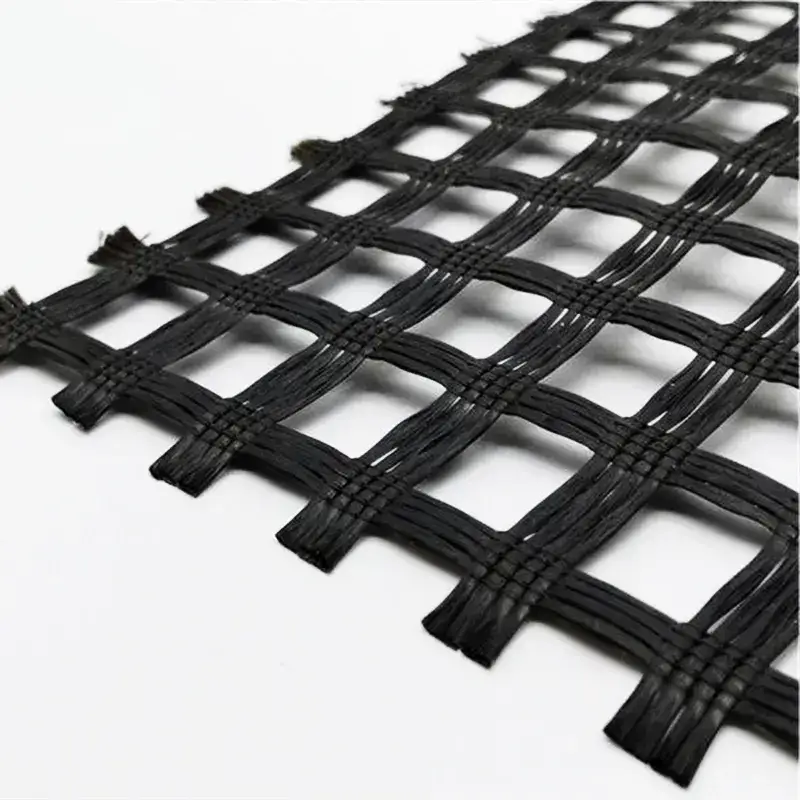
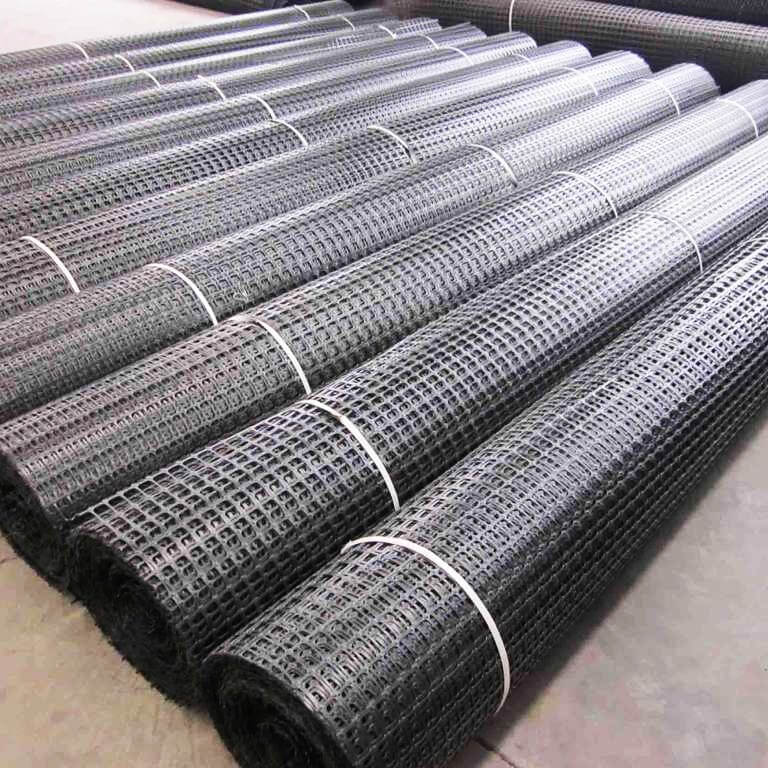
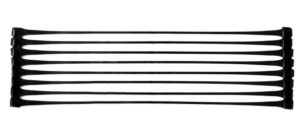
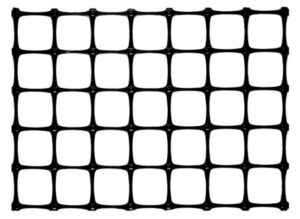
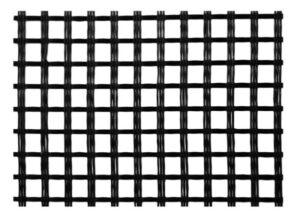
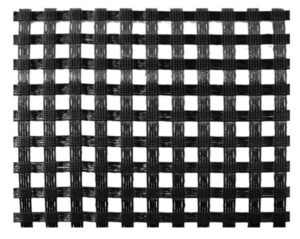
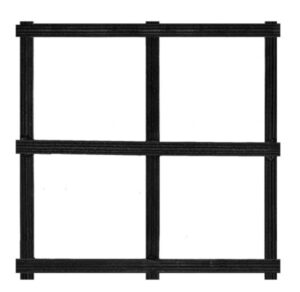
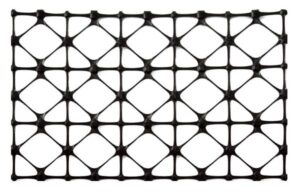
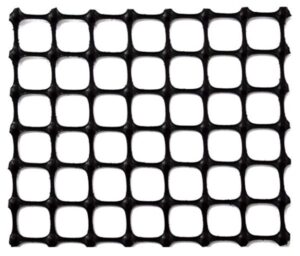
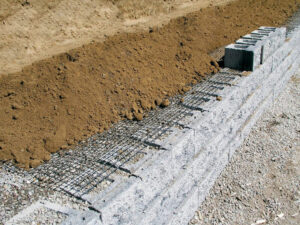

Martínez –
High quality products meet our requirements. The customer is very satisfied